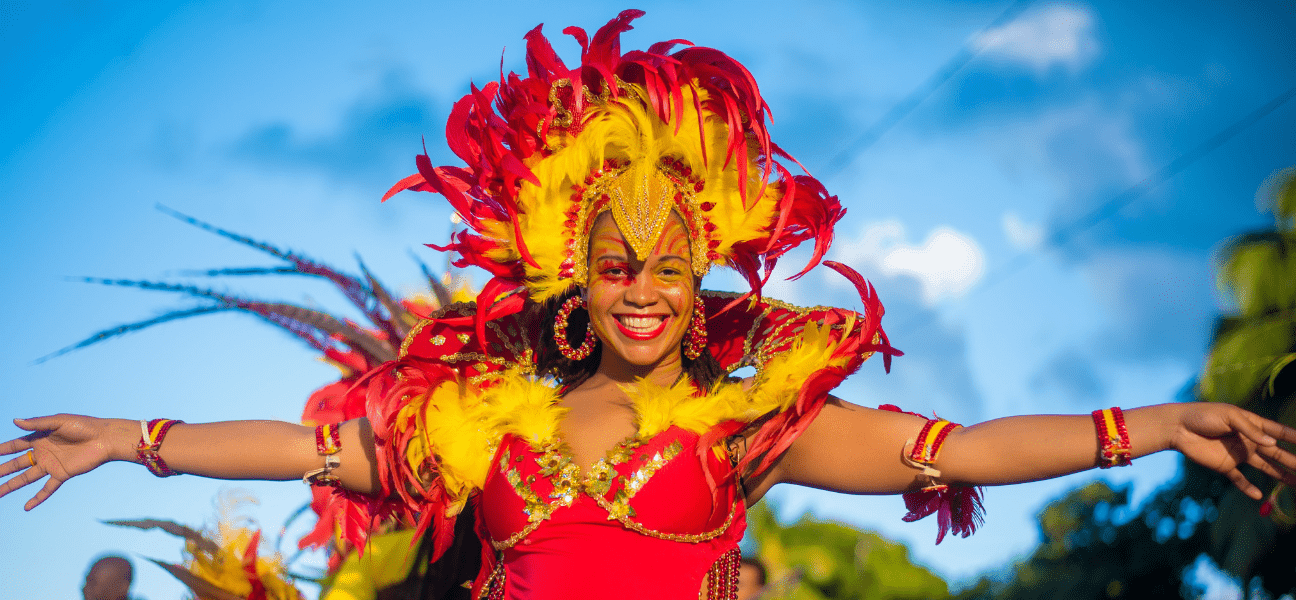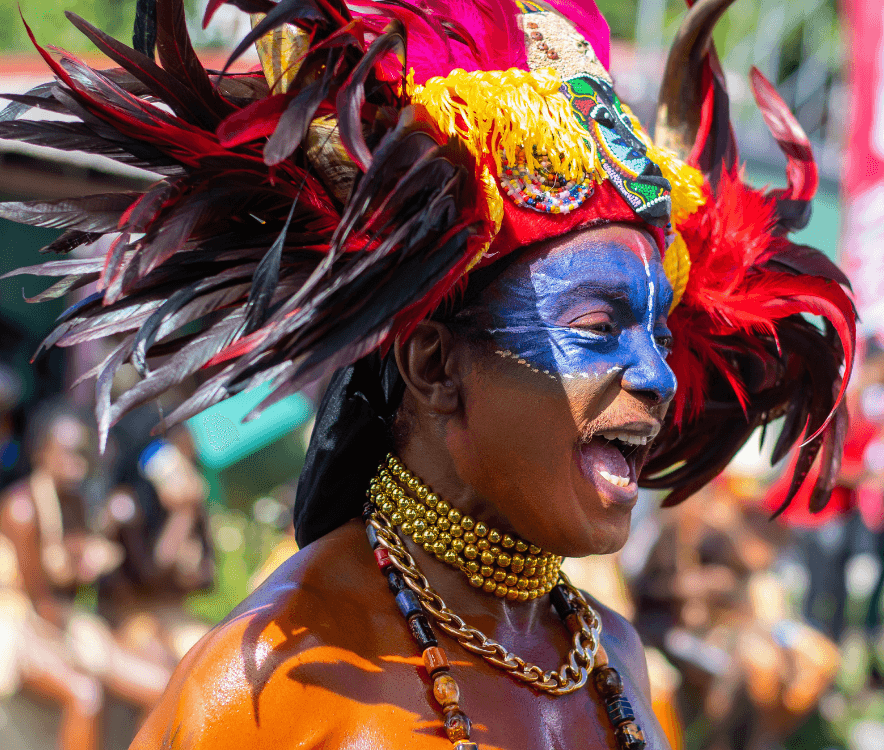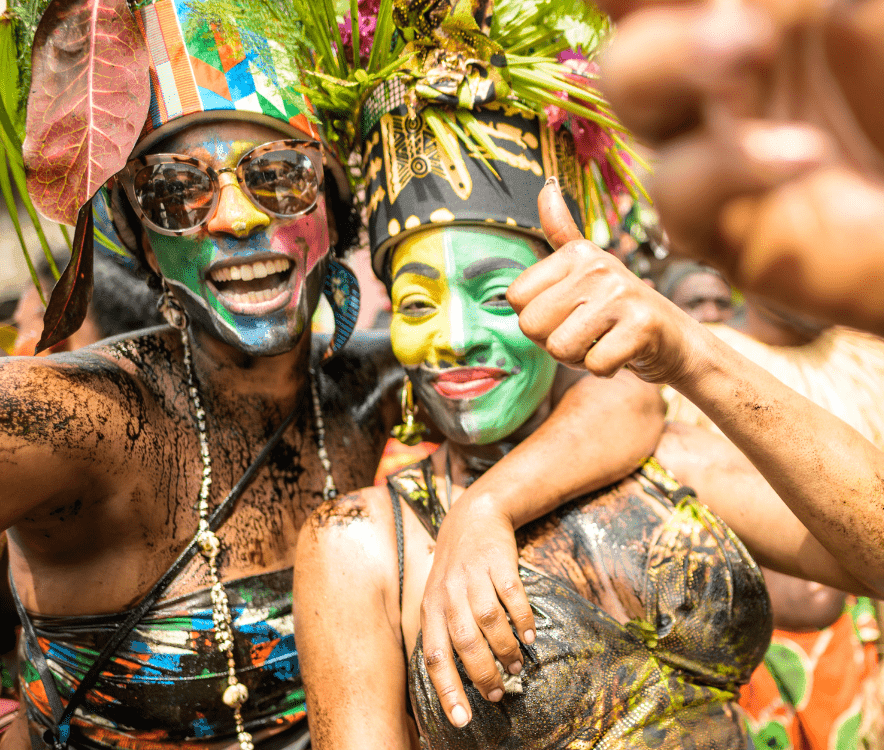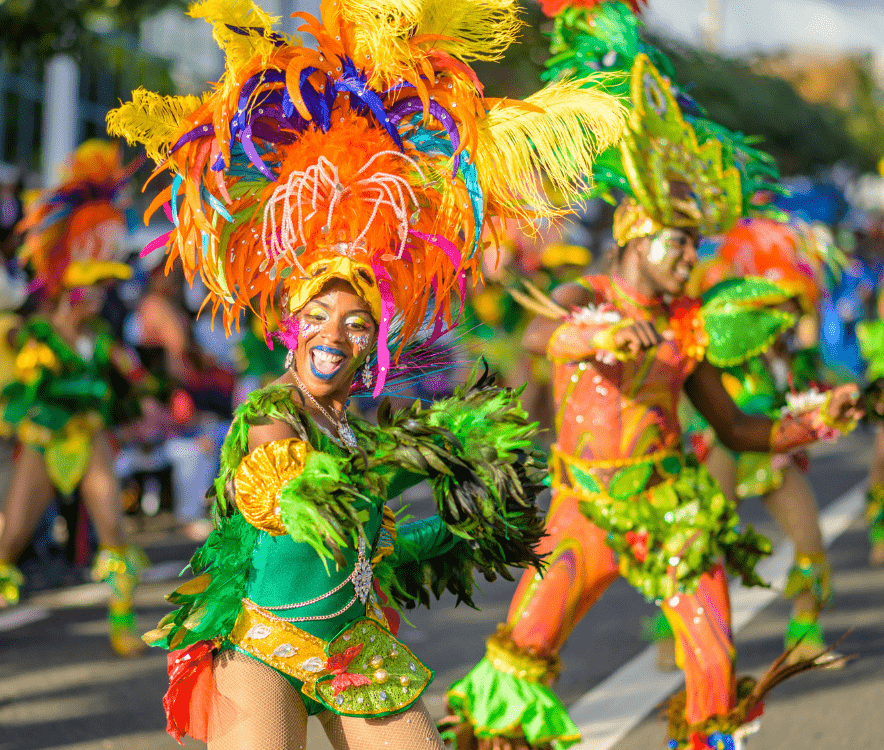The Guadeloupe Islands Carnival

The Guadeloupe Islands Carnival is much more than just a party; it's a large-scale cultural event, where traditions, music and festivities come together in a whirlwind of color and sound. The event, which attracts thousands of visitors every year, has gained international recognition. In 2024, the magazine “Voyageurs du Monde” ranked the Guadeloupe Carnival 4th in its ranking of the world's best carnivals, ahead of such renowned events as Rio de Janeiro and Venice.
A Unique Carnival with Deep Roots
History and Origins
Guadeloupe's Carnival dates back over 150 years, with African, European and Caribbean influences. It begins on the first Sunday in January and ends with the burial of Vaval, King of Carnival, on Ash Wednesday. This marks the end of the festivities after two months of intense celebrations throughout the archipelago.
International recognition
The “Voyageurs du Monde” 2024 world ranking highlights the spectacular parades, the meticulously prepared costume contests and the omnipresent music that punctuates each parade. The climax of the celebrations comes during the “jours Gras”, when Pointe-à-Pitre and Basse-Terre host the biggest events of the year. Compared to other famous carnivals, such as those in Rio (8th) and Salvador de Bahia (9th), the Guadeloupe Carnival stands out for its originality and its attachment to local traditions.

Les Groupes Carnavalesques
The Guadeloupe Islands Carnival is also a lively stage where different types of carnival groups compete, each with its own style and identity.
The Po bands
They can be recognized by their goatskin-stretched drums and traditional instruments such as the chacha and trombophone. These bands, such as Akiyo and Voukoum, play upbeat rhythms like gwo siwo and Sen Jan, while maintaining a strong sense of identity. Their dynamic presence is a must on the streets of Basse-Terre and Pointe-à-Pitre.
The Caisses Claires bands
Inspired by Brazilian rhythms, these bands are known for their extravagant costumes and colorful floats. They prepare intricate choreographies, echoing the parades of Rio de Janeiro Carnival, but with a unique Caribbean twist.
The Moko-Zombis
Inspired by Brazilian and Caribbean carnivals, these stilt-mounted figures add a mystical dimension to the festivities. They embody spirits or mythical figures, making each parade even more impressive.

Highlights and Parades
Guadeloupe's Carnival culminates in the “jours Gras”, a key period when the big parades attract huge crowds :
Dimanche Gras in Pointe-à-Pitre
The big parade where all the bands compete to impress the public and the judges.
Lundi Gras in Basse-Terre & Saint-François
The night parade and choreography competition captivate spectators with light shows and sumptuous costumes.
Mardi Gras in Basse-Terre
This is the biggest parade, renowned for its difficulty due to the city's steep streets. The floats are accompanied by lively music and frenzied dancing.

"Mercredi des Cendres"
The solemn moment when Vaval is buried, symbolizing the end of the carnival festivities.
In addition to the parades, other key moments such as the election of the Carnival Queen or the Shrove Monday "pyjama lévé" offer unique and unforgettable experiences.
Enjoy an authentic Carnival experience
To experience this celebration to the full, we recommend taking part in the various parades and events taking place throughout the archipelago, as well as visiting the exhibitions and creative workshops showcasing the sumptuous costumes and carnival traditions. In 2025, get ready to plunge into two months of total immersion at the heart of this emblematic Guadeloupe festival.
The Guadeloupe Carnival, with its contagious energy and roots in local traditions, is now one of the most admired celebrations in the world.






